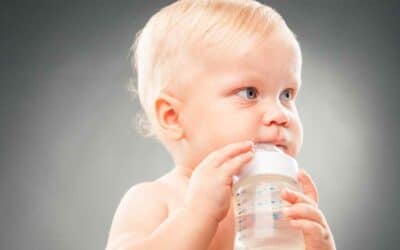Proper hydration is fundamental to an infant’s health, growth, and overall well-being. It is crucial from the earliest days of life, playing a pivotal role in the functioning of their developing bodies and brains. Parents and caregivers, particularly new ones, often navigate a sea of information, recommendations, and products related to bottle-feeding and hydration, seeking to ensure they provide the best care possible to their little ones.
This article will delve into various aspects of bottle-feeding and baby hydration, from choosing the right infant formula bottle and nipple to preparing the bottle with utmost care and precision, to mastering the techniques of bottle-feeding, and ensuring the baby is adequately hydrated. The intent is to empower parents and caregivers with knowledge and practical tips, paving the way for a happy, healthy, and well-hydrated baby. So, whether you are a first-time parent, a seasoned parent, or a caregiver, read on to explore invaluable insights into bottle-feeding and baby hydration.
Choosing the Right Bottle
Selecting the right infant formula bottle is crucial when it comes to bottle feeding, whether you are offering infant formula or expressed breast milk. The bottle acts as an intermediary between your baby’s mouth and the nourishing liquids they need, which may include breast milk, baby formula, or eventually, water. The American Academy of Pediatrics and the World Health Organization offer guidelines that can help ensure that each time your baby drinks from a bottle, they are safe, comfortable, and receiving the right nutrition.
Types of Bottles
There are numerous types of infant formula bottles available, each made with different materials and designed for various needs. When it comes to bottle-feeding or giving your baby drinks, the material of the bottle can impact the overall experience.
1. Plastic Bottles: These are lightweight and unbreakable but should be BPA-free to avoid the risk of harmful chemical leaching.
2. Glass Bottles: These are heavier but do not contain harmful chemicals. However, there is a risk of breakage.
3. Stainless Steel Bottles: These are durable and free from harmful chemicals but can be expensive.
Each type of bottle has its pros and cons, and choosing one largely depends on individual preferences and lifestyle. It is crucial to check for signs of wear and damage regularly, like cracks or discoloration, especially in plastic bottles, to ensure safe preparation and feeding.
Nipple Selection
The nipple is what your baby sucks on, so choosing the right one is vital. Babies drink at different rates, and the nipple’s flow rate should match your child’s drinking capacity, avoiding too much or too little water or formula in each sip.
1. Slow Flow Nipples: Suitable for newborns and small babies, especially during the first few months, ensuring they take small sips at a time.
2. Medium Flow Nipples: Ideal as the baby grows and starts showing signs of wanting to drink more quickly.
3. Fast Flow Nipples: Suitable for older babies, especially those consuming solid foods, enabling them to drink efficiently.
Transitioning to different nipple levels as the baby grows is important. Regularly check nipples for signs of wear and replace them as needed, ensuring each time you feed your baby, it’s a comfortable experience for the little one.
Specialty Bottles
For every breastfed baby or bottle-fed baby with special needs, such as those suffering from colic or reflux, selecting bottles designed for such circumstances is essential. Specialty bottles are engineered to reduce the amount of air a baby ingests during feeding, minimizing discomfort and the risk of related conditions like ear infections.
1. Vented Bottles: These have a built-in tube to prevent air bubbles from mixing with the liquid, reducing air ingestion.
2. Angled Bottles: These keep the nipple filled with milk or formula, reducing air intake, and are convenient for feeding the baby in a semi-upright position, reducing the risk of ear infections.
Preparing the Bottle
Providing optimal nutrition is every caregiver’s and parent’s goal when bottle feeding an infant, and a significant part of achieving this is preparing the bottle correctly. From sterilizing bottles to preparing formula and ensuring water quality, every step is crucial to ensure the child receives safe, clean, and nutritious feedings.
Sterilization
Sterilizing bottles, nipples, and other components is pivotal before every use, especially in the initial months when the baby’s immune system is still developing. Sterilizing eliminates bacteria and other pathogens, ensuring that the bottle feed is safe and preventing complications like gastrointestinal infections and tooth decay.
A step-by-step guide to Sterilizing Equipment:
1. Clean Hands: Always wash hands thoroughly before handling your baby’s bottle.
2. Wash Components: Clean bottles, nipples, and other parts with hot water and mild soap, removing every milk residue. Doing so will help avoid tooth decay.
3. Boil Equipment: Place all components in a large pan, cover them with water, and bring to a rolling boil for at least 5 minutes.
4. Air Dry: Allow all pieces to air dry completely on a clean, dry towel.
5. Store Safely: Once dry, store the sterilized components in a clean, closed container until ready to use.
Formula Preparation
Preparing formula requires precision to ensure the baby receives the correct ratios of water to formula, getting all the nutrients needed. Whether using liquid concentrate, ready-to-feed formula, or powdered formula, following the instructions on the packaging is crucial. Any errors, whether adding too much water or too little, can lead to serious health issues.
How to Prepare Formula:
1. Follow Instructions: Carefully read the instructions on the formula packaging during formula feeding.
2. Measure Correctly: Use the scoop provided to measure the right amount of formula, leveling it off with a knife.
3. Mix Well: Add the measured formula to the water and shake or stir well to avoid clumps, ensuring the nutrients are well distributed.
When choosing a formula, it’s important to consider whether your baby is showing signs of allergies or intolerances, and talk to your local health department or pediatrician about which type of formula is suitable.
Water Quality
Using clean and safe water is imperative when preparing formula. It must be free of contaminants to prevent any harm to the baby.
Tips for Ensuring Water Quality:
1. Boil Tap Water: Boiling tap water is often recommended as it kills most of the harmful pathogens.
2. Use Bottled Water with Caution: If using bottled water, ensure it’s low in sodium and fluoride.
3. Cool to Body Temperature: After boiling, allow the water to cool to the body temperature before adding the formula to avoid hot spots that can burn the baby’s mouth.
Remember, the introduction of cow’s milk should only occur after the age of 1, and the same goes for water in significant amounts before the baby starts on solid foods. Small amounts of water can be introduced around the age of 6 months, especially in hot climates, but feedings should primarily consist of breastmilk or formula.
Bottle-Feeding Techniques
Feeding a baby involves more than just providing enough formula or breastmilk; it requires proper techniques to ensure that the baby is comfortable, secure, and can feed efficiently. This is particularly true when it comes to bottle feeding, where attention to details like holding positions and recognizing hunger and fullness cues can make a significant difference. Below are some essential techniques and tips to optimize bottle-feeding experiences for your baby.
Proper Positioning
Proper positioning is crucial when bottle feeding to prevent the intake of air and reduce the risk of choking, ensuring that the liquid, whether it’s infant formula or expressed breastmilk, flows smoothly to the baby’s mouth.
Guidance on Positioning:
1. Hold Baby Upright: Keep the baby in a semi-upright position in your arms, supporting the head and neck.
2. Tilt the Bottle: The bottle should be tilted enough to fill the nipple with milk or formula, preventing air intake.
3. Keep it Close: Maintain eye contact and hold your baby close to create a bond and make feeding a pleasant experience.
4. Switch Arms Midway: To ensure even development and bonding, switch the arm you use to hold the baby midway through the feed.
Identifying Hunger and Satiety Cues
Recognizing when your baby is hungry or satisfied is crucial to avoid overfeeding or underfeeding. Responding to these cues promptly ensures your baby gets just the right amount of nutrition.
Recognizing Cues:
1. Hunger Signs: Look for signs such as smacking lips, sucking on hands, or becoming more alert and active.
2. Fullness Signs: Turning away from the bottle, closing the mouth, or falling asleep are usually signs that the baby has had enough.
3. Regular Pauses: During feeding, allow your baby small amounts of breaks to determine whether they want to continue drinking or are satisfied.
Burping Techniques
Burping is essential during and after every bottle feed to release any air swallowed during feeding, preventing discomfort and spit-up.
Burping Methods:
1. Over the Shoulder: Hold the baby against your chest, their chin resting on your shoulder, and gently pat or rub their back.
2. Sitting on Your Lap: Support your baby’s chest and head with one hand and gently pat or rub their back with the other.
3. Face Down on Your Lap: Lay your baby face down on your lap, supporting their head and gently pat or rub their back.
Regardless of the method, keep a cloth handy to clean up any spit-up, and continue to burp your baby until they seem comfortable, even if they don’t actually burp.

Conclusion
Navigating the journey of parenthood or caregiving is a monumental task filled with learnings, joys, and challenges. This comprehensive guide on “Bottle-Feeding and Baby Hydration Tips” has aimed to elucidate critical aspects of infant hydration and nourishment, ensuring that parents and caregivers can make informed, confident decisions to foster the well-being of their little ones.
From choosing the right bottle, considering material, flow, and specialty needs, to meticulous preparation involving sterilization and proper mixing of formula, every detail counts in delivering optimal nutrition to the baby. Adopting proper bottle-feeding techniques, being attuned to the baby’s hunger and satiety cues, and mastering the art of burping are all intricate components that play a role in a child’s comfort and happiness during feeding times. Understanding the significance of water quality and when to introduce water alongside milk or formula, while maintaining proper hydration, is essential for the baby’s overall health and development.
Finally, stay informed, ask questions, and seek advice from healthcare professionals and fellow parents. Every child is unique, and staying attuned to their individual needs, preferences, and signals is paramount. Knowledge, attentiveness, and love are the keystones to ensuring your baby thrives, and to making the journey of caring for an infant a joyous and rewarding experience.
Did this article help you? Please comment below and let me know. If you have any questions, I’d be happy to answer them.



